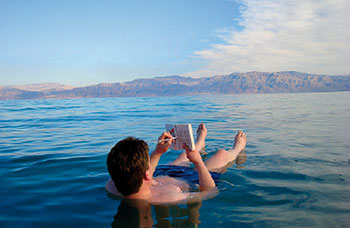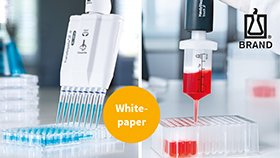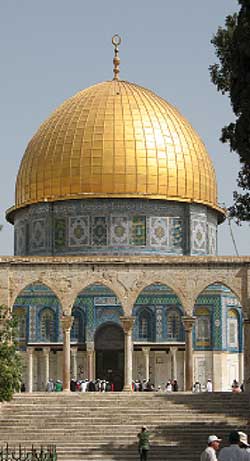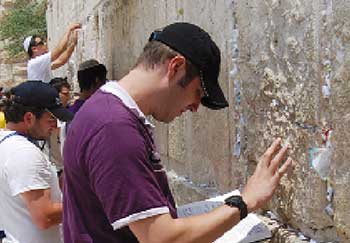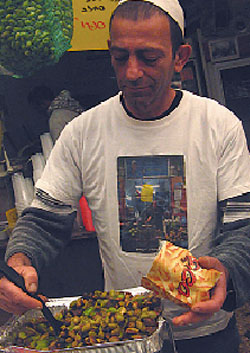Shalom Israel!
Career strategies for young European scientists
by Ralf Schreck, Labtimes 03/2010
With the predicted rise in the defense budget, Israel’s science will hardly will be able to live it up in the near future. Nevertheless, Israel would be a good choice to do a postdoc.
As long as the Middle East conflict is not settled Israel will continue to hit the daily headlines. This doesn’t discourage more than three million tourists a year paying Israel a visit. The majority comes to see the numerous historical and religious sites. Others are more into recreational activities such as floating in the Dead Sea, scuba diving in the Red Sea or skiing on Mount Hernon. Besides its traditions, Israel has also evolved into a leading nation when it comes to research and innovation. It is doing particularly well in high-tech, including computer and medical engineering as well as nano- and biotechnology. Outstanding research institutions, including the Weizmann Institute of Science, have a significant share in this development and also make Israel attractive for scientists from abroad. But is it really a “Holy Land” for the research talent from abroad? The financial crisis has left its marks on Israel, too. Here, Lab Times will report on the latest developments in Israel and also introduce you to a couple of funding opportunities which may spark your interest.
Background
After the State of Israel proclaimed its independence in 1948, more than three million Jews from all over the world immigrated to Israel. The population increased from one to 7.5 million citizens, of which Jews account for three-quarters. Ninety percent of all Israelis live within an area, which can be covered border to border in two hours by car. The capital, Jerusalem, is not officially recognised as such by the international community. Israel is the most developed country in the Middle East and the 41st largest economy in the world. With close to five percent of its gross domestic product, Israel’s relative investment in civilian Research and Development is one of the highest worldwide. Of this expenditure three-quarters are from the business sector and about 40% are earmarked for market-oriented research. Israel is also at the forefront of developed countries when it comes to the defense budget: €10 billion, about a sixth of the total governmental budget. These expenses are supposed to double by 2017 and may lead to a further shortage of resources for other governmental activities. And indeed, several reports including the latest Global Competitiveness Report of the World Economic Forum have already pointed out that Israel is losing some ground to its closest competitors by neglecting societal issues such as education and health.
With the Negev desert covering 60% of the country and scarce natural resources, Israel depends heavily on imports and exports. At the same time, it has developed and also capitalises on innovative technologies including solar energy, water conservation and purification, and greenhouse and desert agriculture. Major industrial sectors include metal products and processed food as well as electrical and biomedical equipment. It is also a leading nation in software development and computer engineering; multinational firms including Microsoft, IBM and Intel have set up branches in Israel. Many inventions including the first flash drive, the first instant messaging programme, ICQ, the Centrino Mobile Technology and the Voice over Internet Protocol have their roots in Israel. Due to the high concentration of software and other high technology companies, the Coastal Plain of Israel is sometimes referred to as Silicon Wadi.
The Life Science sector in Israel has made a large step forward in recent years. While in 1995 there were less than 200, nowadays there are more than 1,000 companies. Major areas are medical devices, biotechnology and pharmaceuticals. According to the US Patent Office, Israel has the highest share in medical devices and the second highest share in biotech patents per capita. These include patents on ingestible cameras such as the Pillcam, magnetic resonance imaging systems such as the Philipps Brillance CT scanner and advanced ultrasound scanners. In the pharmaceutical sector there are more than 60 companies with about 25,000 employees. Teva Pharmaceutical Industries belongs to the top 20 pharmaceutical companies and is the fastest growing drug company and the largest manufacturer of generic drugs in the world. Teva’s own research activities are focused on neurological and autoimmune diseases. One of its blockbusters, Copaxone, for the treatment of multiple sclerosis as well as Azilect for the treatment of Parkinson’s disease were both developed together with Israeli universities. Earlier this year, the Israeli government backed a €50 million investment to venture capital funds. With the help of private investors €200 million in total should promote the establishment of novel biotech start-ups.
Israel’s close ties to Europe are also evident from its participation in European funding programmes. It was the first non-European country to be associated with the European Framework Programmes for Research and Technical Development in 1996. This association enables Israel to participate and receive funding like other EU member states. Its overall share in the ongoing FP7 Programme is, at 20% of all approved applications, quite high. Israel is particularly successful in the People programme, space research and research related to nanotechnology and new materials. Research grants totalling more than €200 million were a major source of financing for Israeli companies in the previous FP6 Programme. In addition, Israel is a full member of EUREKA and COST, European intergovernmental initiatives promoting industry-led and applied as well as basic and pre-competitive research, respectively. Finally, it is also a founding member of the European Molecular Biology Laboratory, EMBL, and the European Molecular Biology Organization, EMBO, and participates in various other initiatives including the European Organization for Nuclear Research, CERN, and the European Synchroton Radiation Facility, ESRF.
As may be expected, Israel does not belong to the top 20 countries with respect to the total number of scientific publications. However, it is 4th after Switzerland, Sweden and Denmark in the number of publications per capita. A further proof of the quality of Israel’s research output is its citation frequency: for papers published in the last decade, it was ranked 13th by Thomson Reuters ScienceWatch. Israel’s relative publication impact is highest in space science, physics, material sciences as well as in some life science disciplines. Israel’s industry is particularly active in patenting in the high-tech sector, meaning information and communication equipment, nanotechnology, biotechnology and also pharmaceuticals. The work of a couple of Israeli scientists has been honoured with the Nobel Prize, including Ada Yonath from the Weizmann Institute for her work on ribosome structure last year as well as Aaron Ciechanover and Avram Hershko from the Technion for ubiquitin-mediated protein degradation in 2004.
R&D System
Israel’s R&D policy in general is strongly market-oriented in nature. Therefore, it is not surprising that the Ministry of Industry, Trade and Labor, MOITAL, has a central leading role in Israel’s innovation system and steadily calls for budget growth. For example, MOITAL is in charge of technology transfer from academic institutions to industry through the Magneton programme and supports applied academic research in biotechnology and nanotechnology by the Noffar programme. Start-ups in an early phase benefit from Technology Incubators and the Tnufa programme. Additional MOITAL responsibilities are competitive industrial R&D projects, participation in EU programmes via ISERD and many bi- and multinational industrial cooperation programmes through its MATIMOP agency. Universities are in charge of higher education and perform basic as well as applied research in close collaboration with the private sector. Governmental or non-for-profit research institutions are rare and restricted to certain areas such as the Volcani Centre for Research in Agriculture or the Israel Institute for Biological Research.
Each ministry involved in research and development is in charge of its own activities. MOITAL and the Ministry of Education receive more than 80% of all governmental R&D funds, whereas other ministries including the Ministry of Science and Technology or the Ministry of Agriculture have smaller shares. To coordinate and maximise efforts, Israel’s National Council for Civilian Research and Development was established in 2004. It advises the government on long-term priorities, regulations and budget allocations. It is currently subordinated to the Ministry of Science and is lacking an independent budget and political self-assertion. A bill to give the council more independence was rejected by parliament in late 2009.
The Israel Academy of Sciences and Humanities, IASH, is a major advisory body of the government on all activities related to research and science. It is also involved in the evaluation and promotion of Israel’s scientific excellence, in research funding and international networking. The Israel Academy consists of more than 100 distinguished and elected scientists and is divided into two sections: Natural Sciences and Humanities & Social Sciences. IASH is headed by the economist Menahem Yaari from the Hebrew University of Jerusalem. The last available annual budget was less than €5 million. This is not much but IASH acts more as a catalyst for major national funding programmes or novel organisations such as the Israel Science Foundation, the Forum for National Research and Development Infrastructure, TELEM, or the National Council for Civilian Research and Development. For example, in the past, TELEM has acquired more than €160 million for the establishment of novel nanoscience research centres. In addition, IASH is administering external funds of the Batsheva de Rothschild Foundation and the Adams Fellowship Program, which provides financial support for doctoral students in the exact sciences, mathematics and life sciences.
A report evaluating biomedical research in Israel was published last year. A task force led by the Academy’s vice president Ruth Arnon from the Weizmann Institute faulted limited funding possibilities, outdated infrastructure, no research time for clinician scientists and poor promotion of young researchers. The report concluded that Israel is in urgent need of a new well-funded National Biomedical Research Fund comparable to the US National Institutes of Health. As a first response to the report, a €30 million Biomedical Partnership Program was launched by the Israeli Science Foundation and others, illustrating the importance of lobbying by IASH for Israel’s science.
Top-rated Universities
Seven major public universities with more than 120,000 students, a distance learning Open University with 45,000 students and about 60 non-university institutions constitute the higher education system of Israel. The universities are: the Weizmann Institute of Science in Rehovot, the Technion-Israel Institute of Technology in Haifa, the University of Haifa, the Ben-Gurion University of the Negev in Be’er Sheva, the Hebrew University of Jerusalem, the Tel Aviv University and the Bar-Ilan University in Ramat. Except for the Weizmann and the Technion, universities offer the full spectrum of disciplines and do confer Bachelor, Master and PhD degrees. In general, tuition fees are charged and their rise is a matter of ongoing disputes. For example, in postgraduate programmes, the Tel Aviv University levies up to $21,000 from international and up to $3,000 from domestic students per academic year. The fee does not include housing nor costs for the Ulpan, intensive Hebrew language courses, which are mandatory for international students. Around thirty universities, mainly from the U.S., run local campuses in Israel and offer the possibility for foreign students to get a degree or at least spend some study time in Israel.
In the 2009 THE – QS World University Rankings, three Israeli universities made it into the top 150 in the overall ranking: the Hebrew University (102), the Tel Aviv University (114) and the Technion (132). In the subject ranking Biomedicine and Life Sciences once again the Hebrew University of Jerusalem was the leading Israeli university at rank 64, whereas the Technion made it to number 33 in Natural Sciences. In the Academic Ranking of World Universities 2009, the Weizmann Institute and the Technion were rated 13th and 17th in computer science, respectively; the Tel Aviv University made it to spot 25 in mathematics and the Technion was 40th in engineering.
The Council for Higher Education is the official government body in charge of higher education and is headed by the Minister of Education, Culture and Sports, Gideon Sa’ar. It grants permission and accreditations to national and foreign institutions of higher education, authorises study courses, and is responsible for the award and recognition of academic degrees. Via its Planning and Budgeting Committee, proposals are made for the governmental budget and the future development of universities. The allocation for the current academic year is close to €1.4 billion. Most universities receive about two-thirds of their budget directly from the government. Starting in October 2010 a five-year budget plan shall be put in place, which will contain a programme to encourage excellence in research and teaching. It will also address the problem that the universities are increasingly spending large parts of their budget for the payment of pensions.
Earlier this year, the Israeli government approved the creation of 30 excellence centres at universities over the next five years. A quarter of a billion euros will be equally split between the government, universities and private sponsors from abroad. The aim of this programme is to lure back a couple of hundred leading Israeli scientists from abroad. While 4,500 senior scientists are currently working at Israel’s universities, one to three thousand are estimated to be working outside Israel. At the same time, about half of today’s academics will retire within the next decade. The excellence centre programme is not saluted by all scientists. In the light of recent budget cuts and hiring freezes at universities they would prefer increased research budgets and the financing of more positions. This would also improve the situation of immigrant researchers. For example, there are about 500 non-tenured immigrant researchers currently financed by the KAMEA programme. This programme with an annual budget of €30 million was created in 1998 to adsorb immigrant scientists, primarily natural scientists and mathematicians from the former Soviet Union. Although the financing of the immigrant researcher positions was promised up until retirement, the programme is under fire each year, when it comes to budget renewals.
The Weizmann Institute
The Weizmann Institute of Science (WIS) in Rehovot always was and still is the pioneer and major driving force of Israel’s research. Initially founded as the Daniel Sieff Research Institute in 1934 with 11 scientists, it progressively developed into one of the leading research institutions with 250 professors, 850 scientists and more than 1,000 students. About a quarter of graduate students and a third of postdocs are non-Israelis. Major fields of research and education are biology, biological chemistry, chemistry, physics, computer science, mathematics and some interdisciplinary disciplines. The 1.2 sq km campus harbours about 80 buildings, 18 departments and 50 interdisciplinary research centres. It is home to the Feinberg Graduate School, to the Clore Garden of Science, the world’s first fully interactive outdoor science museum, and the Davidson Institute for Science Education, which involves yearly 100,000 scientists and non-scientists of all ages in its various activities. It also houses the Yeda Research and Development Company, the first technology transfer company in Israel involved in patenting and licensing as well as attracting research money from the industry.
The €270 million WIS budget is derived only to a third directly from the government. Other important sources of income are third-party research projects and revenues from inventions as well as donations and legacies. Weizmann support committees have been established all over the world. The American Committee alone contributed €45 million and had net assets close to half a billion euros in 2008. Novel research centres, fellowship programmes or professorships are often named after major benefactors or foundations. For example, the Californian Lorry Lokey made a pledge of $30 million in 2006 to create a pre-clinical research facility and a research school of biochemical sciences in his name.
For WIS scientists there are two tenure track pathways: the Scientific/Professorial Personnel track and the Staff Scientist track. All researchers of the Scientific Personnel track are independent group leaders supervising students, pursuing their own research projects and competing for internal and external funding. The Senior Scientist, a position equivalent to assistant professor, is the normal entry-level position. Direct appointments to Associate or Full Professor are rare. Applications are initially evaluated at the level of faculty and upon recommendation forwarded to review by the Academic Appointments and Promotion Committee. In general, it takes three to six months until a final decision is made. Promotions are solely dependent on research output. To get on the Staff Scientist track you need a PhD, MD or equivalent title as well as a Senior Scientist or Professor sponsoring your employment. In addition, there are non-tenured academic positions: Intern (Mitmache) and Senior Intern (Mitmache Bachir), which are both limited to three years.
Around 700 scientists visit the Weizmann Institute every year. There are two annual deadlines in the Feinberg Foundation Visiting Faculty Program. To apply, you have to be recently tenured or be on a tenure track. Fellowships are for up to one year and dependent on the hosting institute you may get a remuneration, travel and/or rent-free housing. Similar conditions apply to the Visiting Professors Program, which is limited to full professors. The Weizmann was repeatedly rated among the top three non-US institutions by TheScientist’s survey “Best Places to Work in Academia for Postdocs”. But as a postdoc you may still not want to buy ‘a pig in a poke’ and pay WIS a short visit before you strike camp. You may apply for competitive funds covering travel and accommodation for one week. You have to contact group leaders in advance and find out whether they are willing to host you. Further requirements are that either your doctoral thesis is close to being finished or that you have less than two years of postdoctoral experience. Another must is at least one first author paper in a decent journal.
FGS, the Feinberg Graduate School, is the educational arm of WIS. Studies are performed within the framework of five research schools covering the major research topics of the WIS. Awarded are Master and PhD degrees. There are no tuition fees, all courses involve participation in research projects and are taught in English. Fellowships are provided for all students. PhD fellowships cover up to 54 months and amount to €1,500 per month. Moreover, PhD students have an individual budget for travel and for the purchase of a laptop. Housing is available for a monthly rate between €60 and €250. In addition, the FGS administers the Postdoctoral Fellowship Program of the WIS, which is open to PhDs and MDs from local or foreign institutions. The standard monthly fellowship rate is €1,800 plus a yearly travel allowance of €1,250 and a relocation allowance for foreigners. Exceptional postdocs may be recommended for a Koshland fellowship, which adds a one-time €3,800 research grant and additional €1,900 travel money to the standard fellowship. All inquiries to FGS to provide some additional insights into its activities remained, at the time of print, unanswered.
Funding Opportunities
There are numerous funding opportunities for foreign scientists at all levels to spend some time at Israel’s institutions. The Mobility Portal Israel is providing more than 450 links to grants and fellowships. Many fellowships are available at the local level. Your future host in Israel may know all about how to get them or will direct you to the department in charge of assisting you with this matter. Fellowships are available through institute partnerships or are provided by national and international foundations and funding organisations. There are bi-lateral agreements and foundations with many countries that allow the mutual exchange of scientists or collaborative research grants. For example, the US-Israel Binational Science Foundation BSF distributes $15 million and the German-Israeli Foundation GIF about €10 million per year for travel, fellowships and research grants. The Lady Davis Fellowship Trust enabled in the past already more than 1,500 international students, postdocs and professors to study, research or teach at the Technion or the Hebrew University. Fellowships may be allocated for research on a specific disease or to a specific lab head, institute, faculty or university in a competitive or non-competitive manner. If you still have no host, you may find details on group leaders, research interests, open positions and funding sources on the web. Good starting points are www.ard.huji.ac.il for the Hebrew University, www.trdf.co.il for the Technion or www.weizmann.ac.il/RGP_open for WIS.
Israel Science Foundation
ISF, the Israel Science Foundation, is the major source for basic research grants in Israel. Since 1992 the ISF has been a legally independent non-profit organisation and provides support for staff scientists working at Israeli institutions. In short, with the exception of initiatives to bring back Israeli expatriates, there are no ISF programmes to attract the international talent. The majority of the €60 million annual budget is derived from the Council for Higher Education. More than 1,400 grants are supported each year and 85% of the budget is for individual research grants. Proposals are evaluated by six to eight national and international reviewers. According to Tamar Jaffe-Mittwoch, the director of ISF, evaluations are solely based on scientific excellence and criteria such as age, gender, affiliation or stage are not taken into consideration. Only a third of all applications actually receive funding.
Besides individual grants, the ISF offers several additional funding programmes. Some of the programmes such as equipment grants, Centres of Excellence or Focal Initiatives in Research in Science and Technology Grants (Bikura) have to be counter-financed by the host institution. The ISF also administers funds provided by the Legacy Heritage Fund of New York. The Legacy Heritage Science Initiative (Morasha) programme facilitates the return of Israeli postdoctoral scientists from abroad by providing one-time lab establishment grants, start-up grants and three-year research grants. The Legacy Heritage Clinical Research Initiative supports clinicians at university-affiliated hospitals each year with three-year research grants and salary support. The above-mentioned Legacy Heritage Biomedical Science Partnership is a joint programme between Morasha, the Israeli Government and other private sponsors. Promoted is biomedical research into genetic and neurodegenerative diseases. More than €30 million will be spent within a five-year period on grants and on Biomedical Centres of Excellence.
Outlook
The Israeli universities as main research performers have been hit hard by the financial crisis. A report by state comptroller, Micha Lindenstrauss, revealed that Israel’s universities have been accumulating a large deficit of €3.5 billion. Primarily, this is due to reduced donations and losses from own investments into the capital market. However, at the same time student numbers are increasing. An insufficient number of positions for academics and the efforts to integrate immigrant academics, to bring back Israeli scientists working abroad and meet the needs for promotion of local scientists, don’t leave much space for non-Israeli scientists. Novel initiatives to boost research and innovation in certain key areas have problems getting appropriate financing. With the predicted rise in the defense budget, universities won’t be able to live it up in the near future. Nevertheless, Israel is a good choice if you just plan to do a two-year postdoc and move on afterwards. Good science, renowned institutions and many fellowship opportunities in a country with ample recreational possibilities will make your stay worthwhile.
Internet Resources
Last Changed: 09.06.2012






